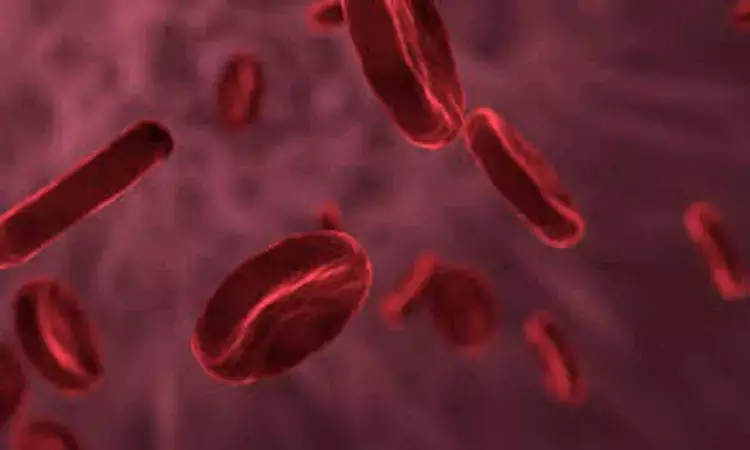- Home
- Medical news & Guidelines
- Anesthesiology
- Cardiology and CTVS
- Critical Care
- Dentistry
- Dermatology
- Diabetes and Endocrinology
- ENT
- Gastroenterology
- Medicine
- Nephrology
- Neurology
- Obstretics-Gynaecology
- Oncology
- Ophthalmology
- Orthopaedics
- Pediatrics-Neonatology
- Psychiatry
- Pulmonology
- Radiology
- Surgery
- Urology
- Laboratory Medicine
- Diet
- Nursing
- Paramedical
- Physiotherapy
- Health news
- Fact Check
- Bone Health Fact Check
- Brain Health Fact Check
- Cancer Related Fact Check
- Child Care Fact Check
- Dental and oral health fact check
- Diabetes and metabolic health fact check
- Diet and Nutrition Fact Check
- Eye and ENT Care Fact Check
- Fitness fact check
- Gut health fact check
- Heart health fact check
- Kidney health fact check
- Medical education fact check
- Men's health fact check
- Respiratory fact check
- Skin and hair care fact check
- Vaccine and Immunization fact check
- Women's health fact check
- AYUSH
- State News
- Andaman and Nicobar Islands
- Andhra Pradesh
- Arunachal Pradesh
- Assam
- Bihar
- Chandigarh
- Chattisgarh
- Dadra and Nagar Haveli
- Daman and Diu
- Delhi
- Goa
- Gujarat
- Haryana
- Himachal Pradesh
- Jammu & Kashmir
- Jharkhand
- Karnataka
- Kerala
- Ladakh
- Lakshadweep
- Madhya Pradesh
- Maharashtra
- Manipur
- Meghalaya
- Mizoram
- Nagaland
- Odisha
- Puducherry
- Punjab
- Rajasthan
- Sikkim
- Tamil Nadu
- Telangana
- Tripura
- Uttar Pradesh
- Uttrakhand
- West Bengal
- Medical Education
- Industry
New technology diagnoses sickle cell disease in one minute only

Researchers at the University of Colorado Boulder and the University of Colorado Anschutz Medical Campus have developed a new way to diagnose diseases of the blood like sickle cell disease with sensitivity and precision and in only one minute. Their technology is smaller than a quarter and requires only a small droplet of blood to assess protein interactions, dysfunction or mutations.
The team published its results in the journal Small.
"In Africa, sickle cell disease is the cause of death in 5% of children under 5-years-old for lack of early diagnosis," said Angelo D'Alessandro, a coauthor of the study and associate professor in the departments of Biochemistry and Molecular Genetics and Medicine, Division of Hematology at CU Anschutz. "This common, life-threatening genetic disorder is most prevalent in poor regions of the world where newborn screening and diagnosis are rare."
Sickle cell disease affects hemoglobin, the molecule in red blood cells that delivers oxygen to cells throughout the body. In some areas of the world where malaria is endemic, variants of hemoglobin have evolved that can cause red blood cells to assume a crescent, or sickle, shape.
"Almost all life activities involve proteins," said study coauthor Xiaoyun Ding, an assistant professor in the Paul M. Rady Department of Mechanical Engineering at CU Boulder. "We thought if we could measure the protein thermal stability change, we could detect these diseases that affect protein stability."
Proteins have a specific solubility at a specific temperature. When one bonds to another, or when the protein is mutated, the solubility changes. By measuring solubility at different temperatures, researchers can tell whether the protein has been mutating.
Before recent developments, study coauthor Michael Stowell, an associate professor in the Department of Molecular, Cellular and Developmental Biology (MCDB) at CU Boulder, and his colleagues used Thermal Shift Assays (TSAs) to assess protein stability under varying conditions. Such tests took about a day to run. Now, with the new technology, an Acousto Thermal Shift Assay (ATSA), they can do the same but faster and with greater sensitivity.
The ATSA utilizes high-amplitude sound waves, or ultrasound, to heat a protein sample. The tool then measures data continuously, recording how much of the protein has dissolved at every fraction of change in degrees Celsius.
"Our method is seven to 34 times more sensitive," said Ding. "The ATSA can distinguish the sickle cell protein from normal protein, while the traditional TSA method cannot."
Another benefit of the ATSA is cost reduction in terms of human labor and equipment.
"The traditional methods for thermal profiling require specialized equipment such as calorimeters, polymerase chain reaction machines and plate readers that require at least some technical expertise to operate," said Kerri Ball, a coauthor of the new study and a researcher who works with Stowell at CU Boulder. "These instruments are also not very portable, requiring samples to be transported to the instruments for analysis."
Ball said the ATSA requires only a power source, a microscope and a camera as simple as the one on your smart phone. Because the protein is concentrated, there is also no need to apply a florescent dye as is sometimes required to highlight protein changes in a traditional TSA.
For further references log on to:
Dr Kamal Kant Kohli-MBBS, DTCD- a chest specialist with more than 30 years of practice and a flair for writing clinical articles, Dr Kamal Kant Kohli joined Medical Dialogues as a Chief Editor of Medical News. Besides writing articles, as an editor, he proofreads and verifies all the medical content published on Medical Dialogues including those coming from journals, studies,medical conferences,guidelines etc. Email: drkohli@medicaldialogues.in. Contact no. 011-43720751


